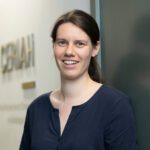Link to Pubmed [PMID] – 34081564
Link to DOI – 10.1080/14992027.2021.1929515
Int J Audiol 2022 Mar; 61(3): 205-219
A model-based determination of the average supra-threshold (“distortion”) component of hearing impairment which limits the benefit of hearing aid amplification.Published speech recognition thresholds (SRTs) were predicted with the framework for auditory discrimination experiments (FADE), which simulates recognition processes, the speech intelligibility index (SII), which exploits frequency-dependent signal-to-noise ratios (SNR), and a modified SII with a hearing-loss-dependent band importance function (PAV). Their attenuation-component-based prediction errors were interpreted as estimates of the distortion component.Unaided SRTs of 315 hearing-impaired ears measured with the German matrix sentence test in stationary noise.Overall, the models showed root-mean-square errors (RMSEs) of 7 dB, but for steeply sloping hearing loss FADE and PAV were more accurate (RMSE = 9 dB) than the SII (RMSE = 23 dB). Prediction errors of FADE and PAV increased linearly with the average hearing loss. The consideration of the distortion component estimate significantly improved the accuracy of FADE’s and PAV’s predictions.The supra-threshold distortion component-estimated by prediction errors of FADE and PAV-seems to increase with the average hearing loss. Accounting for a distortion component improves the model predictions and implies a need for effective compensation strategies for supra-threshold processing deficits with increasing audibility loss.
